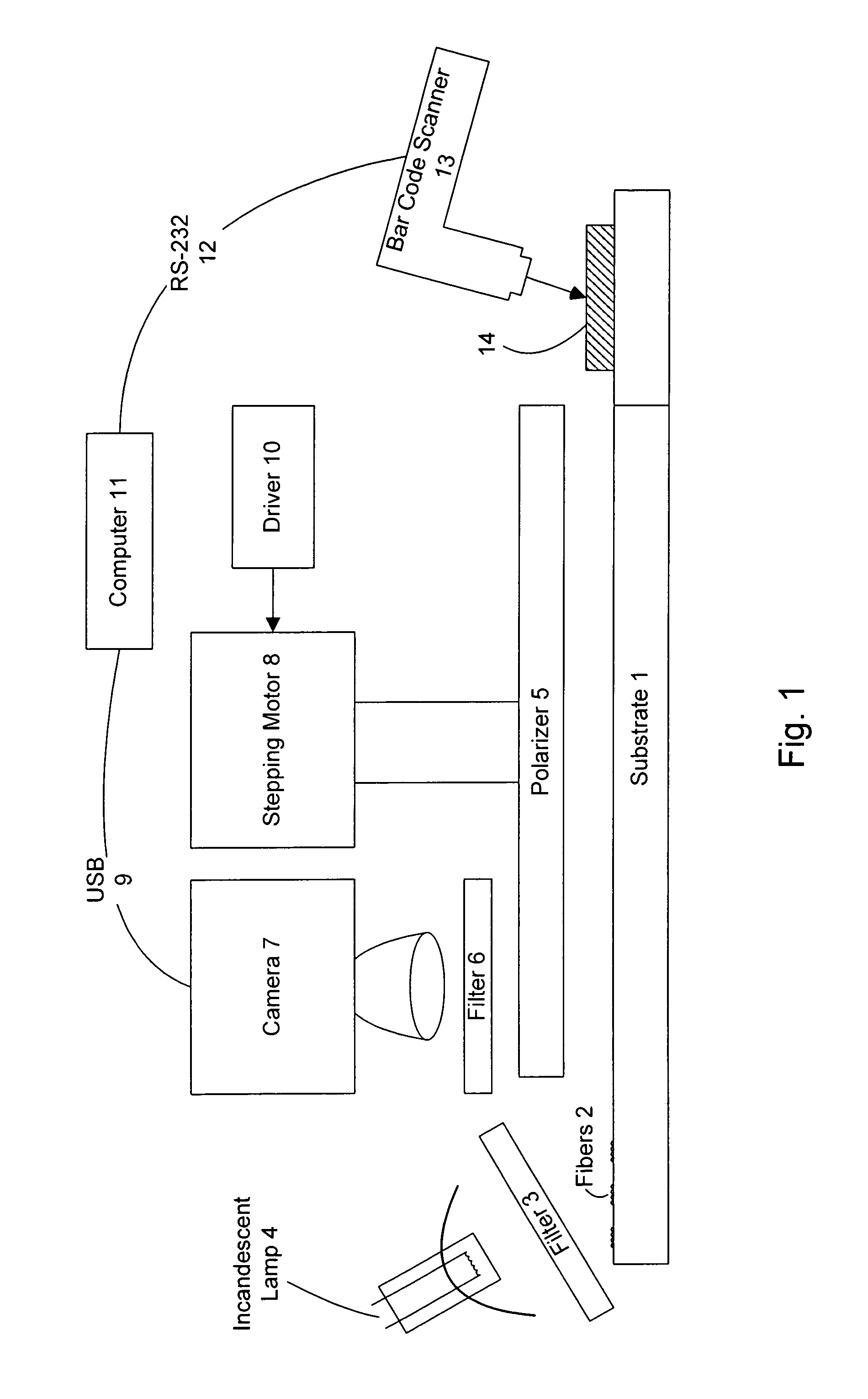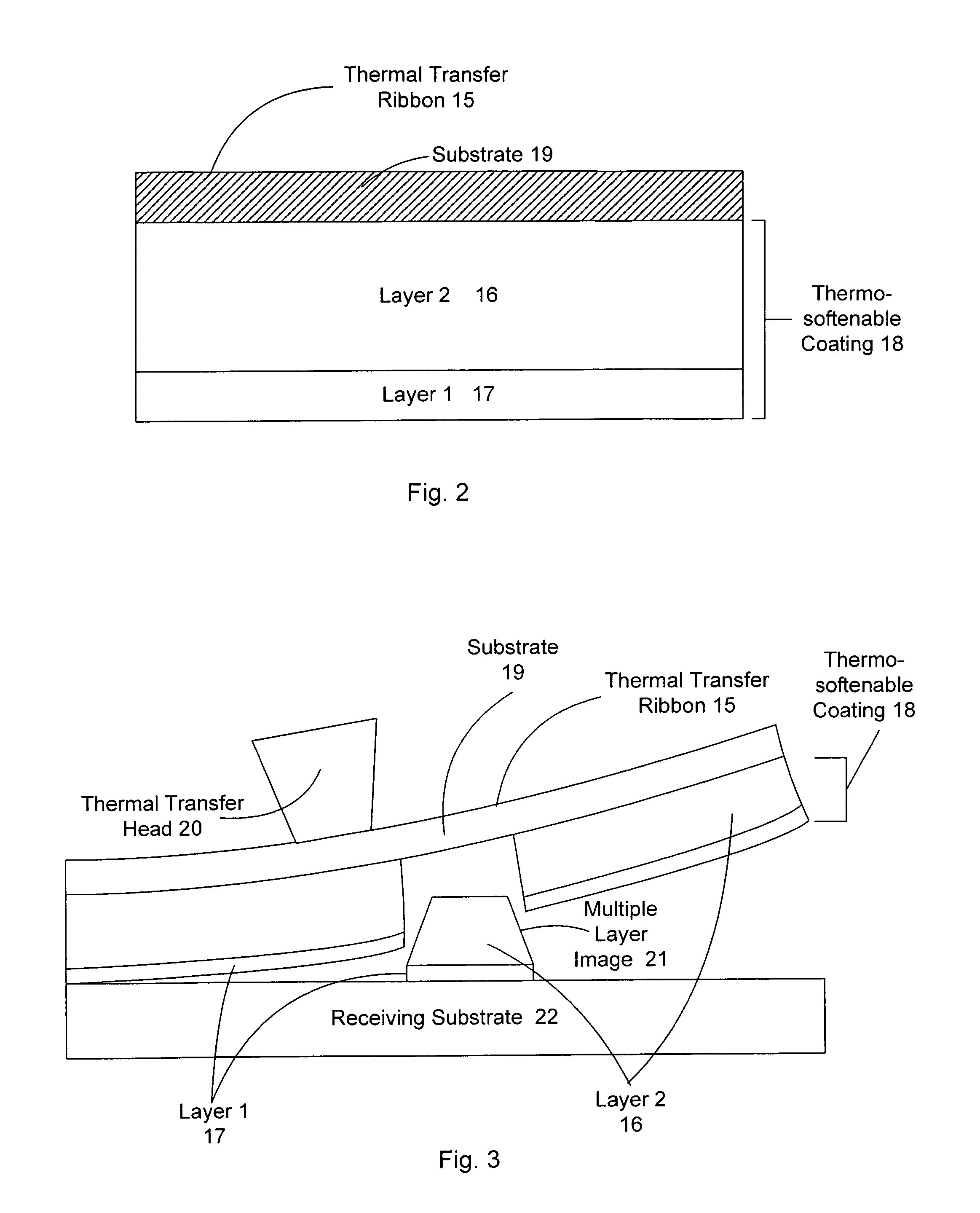Authentication method and system
a technology of authentication method and system, applied in the field of object authentication and counterfeit detection, can solve the problems of difficult reprography, color balance and halftone shapes are extremely difficult to reproduce, and cannot be readily photocopied
- Summary
- Abstract
- Description
- Claims
- Application Information
AI Technical Summary
Benefits of technology
Problems solved by technology
Method used
Image
Examples
Embodiment Construction
[0243]The detailed preferred embodiments of the invention will now be described with respect to the drawings. Like features of the drawings are indicated with the same reference numerals.
[0244]In FIG. 1, a substrate 1 with dichroic fibers 2 located on it is subject to a filter 3 of an incandescent lamp 4. A polarizer 5 is beneath a filter 6 underneath a camera 7 and this camera 7 via a Universal Serial Bus (USB) 9 is connected to a computer 11 which is in turn connected to a bar code scanner 13 via a RS-232 standard serial port 12. The bar code scanner 13 scans the bar code 14 on the substrate 1 and completes the authentication procedure with the aid of the computer 11.
[0245]FIG. 2 shows a thermal transfer ribbon 15 comprising a substrate 19, and positioned on the substrate 19 is a thermosoftenable coating 18 which comprises a layer 16 and a layer 17, layer 17 comprises a sensible material, e.g. binder compounds. Layer 16 is crystalline, and has a melting temperature above the print...
PUM
 Login to View More
Login to View More Abstract
Description
Claims
Application Information
 Login to View More
Login to View More - R&D
- Intellectual Property
- Life Sciences
- Materials
- Tech Scout
- Unparalleled Data Quality
- Higher Quality Content
- 60% Fewer Hallucinations
Browse by: Latest US Patents, China's latest patents, Technical Efficacy Thesaurus, Application Domain, Technology Topic, Popular Technical Reports.
© 2025 PatSnap. All rights reserved.Legal|Privacy policy|Modern Slavery Act Transparency Statement|Sitemap|About US| Contact US: help@patsnap.com



